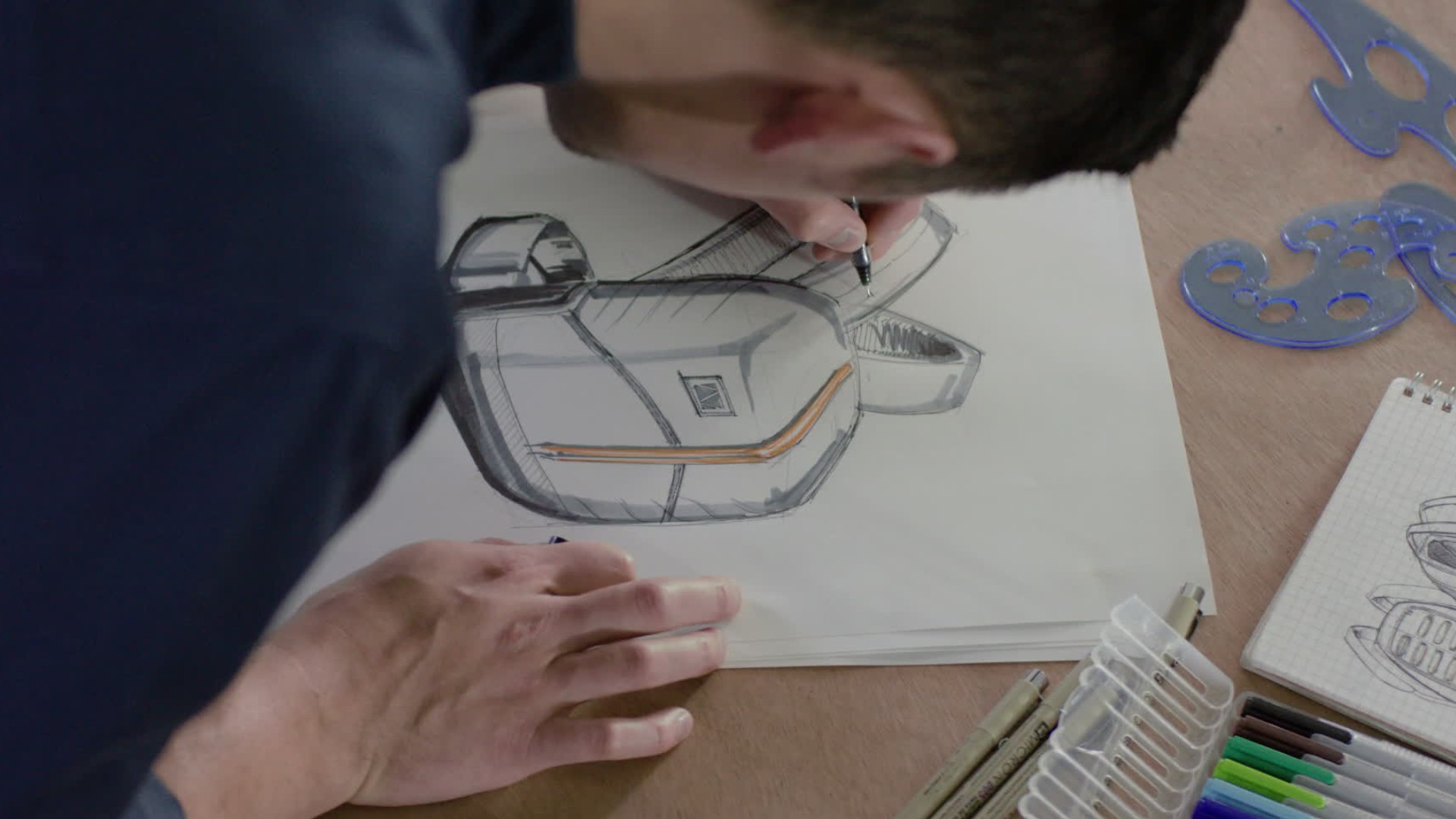Commercial & Industrial Designers
Design Engineer, Designer, Industrial Designer, Product Designer
 Select a military branch to see samples.
No similar titles were found.
No similar titles were found.
No similar titles were found.
Select a military branch to see samples.
No similar titles were found.
No similar titles were found.
No similar titles were found.
Additive Manufacturing Officer; Additive Manufacturing Specialist; Advanced Visual Information-Graphics Marine; Combat Artist (Officer); Combat Graphics Specialist
Graphic Illustrator Apprentice
No similar titles were found.
What they do:
Design and develop manufactured products, such as cars, home appliances, and children's toys. Combine artistic talent with research on product use, marketing, and materials to create the most functional and appealing product design.
On the job, you would:
- Prepare sketches of ideas, detailed drawings, illustrations, artwork, or blueprints, using drafting instruments, paints and brushes, or computer-aided design equipment.
- Modify and refine designs, using working models, to conform with customer specifications, production limitations, or changes in design trends.
- Evaluate feasibility of design ideas, based on factors such as appearance, safety, function, serviceability, budget, production costs/methods, and market characteristics.
Knowledge
Engineering and Technology
- design
- product and service development
Manufactured or Agricultural Goods
- manufacture and distribution of products
Math and Science
- arithmetic, algebra, geometry, calculus, or statistics
- physics
Arts and Humanities
- English language
Skills
Basic Skills
- listening to others, not interrupting, and asking good questions
- reading work related information
Problem Solving
- noticing a problem and figuring out the best way to solve it
People and Technology Systems
- thinking about the pros and cons of different options and picking the best one
- figuring out how a system should work and how changes in the future will affect it
Abilities
Ideas and Logic
- come up with lots of ideas
- create new and original ideas
Verbal
- communicate by speaking
- listen and understand what people say
Personality
People interested in this work like activities that include creating, designing, and making your own rules.
They do well at jobs that need:
- Innovation
- Achievement Orientation
- Intellectual Curiosity
- Attention to Detail
- Adaptability
- Dependability
Technology
You might use software like this on the job:
Computer aided design CAD software
- Autodesk Revit
- Dassault Systemes SolidWorks
Video creation and editing software
- Adobe After Effects
- Kapwing
Graphics or photo imaging software
- Adobe Creative Cloud software
- Trimble SketchUp Pro
Education
Education: (rated 4 of 5)
bachelor's degree or
some college
usually needed
some college
usually needed
Job Outlook
Average
New job opportunities are likely in the future.
Explore More
- Fabric & Apparel Patternmakers
- Fashion Designers
- Mechanical Drafters
- Model Makers, Metal & Plastic
- Patternmakers, Metal & Plastic
You might like a career in one of these industries:
See more details at O*NET OnLine about Commercial & Industrial Designers.






